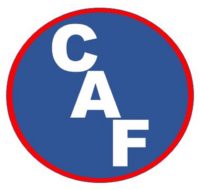Is CAF better for WL than for use in Structure Fires?
Well, let’s analyze the situation.
Wildland is natural grown fuels (both wild and agricultural), all are CLASS A FUELS that burn when fuel, heat and O2 combine. Heat and O2 are pretty much always readily present. The fuels tend to only burn at certain times of the year when the relative humidity (RH) and fuel moisture levels are low enough to render the fuel “available to burn”. Since WL fires generally happen in the open, O2 is pulled in at the bottom and the heat, smoke and gases rise up into the atmosphere. WL fires are extinguished predominantly by 2 methods – eliminate the fuel or cool the fuel. On large fires, crews cut fuel breaks and burnout the light fuels to remove available fuels ahead of the main fire. Once the main fire reaches these fuel breaks, the fire stops. On smaller fires, water can be used to cool and stop the fires.
CAF can do both jobs – the water in the foam (bubbles is water) can cool the fire, while the carbon loving and reduced surface tension properties of the water causes the fuel to absorb the water, thus increasing the fuel moisture making the fuel temporarily unavailable to burn (basically removing available fuel).
Let’s look at structure fires – a combination of fuel, heat and O2, mostly CLASS A FUELS. The biggest part of the Class A Fuels in a structure fire (wood, paper, cloth, furniture, etc.) originated in the WL or Ag Lands. The big difference is that in a structure fire, we put a lid (roof) on these Class A Fuels, thus holding in the heat. Ventilating the roof – opens the lid and the fire burns the same as in the WL – air in at the bottom, heat, smoke, and gasses rise to the atmosphere. Structure fires are extinguished the same way – generally cooling the fuels, but occasionally the fire burns until there is no longer any available fuel – case in point – The Walmart warehouse fire in Indiana (2022). Once the roof opened, it was a large running fire consuming all the available fuel until it ran out. The surrounding parking lot was the fuel break. CAF cools fire, and clings to and soaks into fuels making the fuels unavailable to burn.
Both scenarios are CLASS A FUELS, burn when fuel, heat and O2 combine, and both burn until the fire is cooled or runs out of available fuel.
The moral here is – CLASS A CAF works on CLASS A ORDINARY COMBUSTIBLE FUEL FIRES – whether its in the wildland, agricultural field, or interior structure. Plain & simple… Cool the fire and/or reduce the fuel available to burn.
CAF works in both scenarios. PERIOD!!!!




























